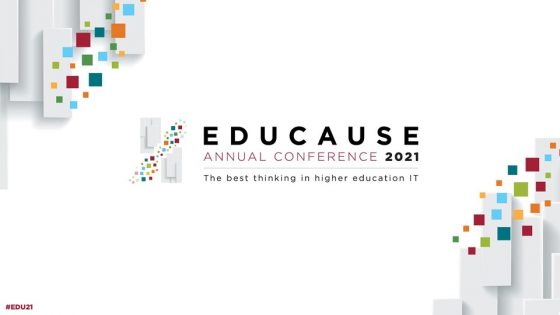Accessibility in education is a major focus of the industry and its analysts. This has become increasingly true as education has become more reliant on technology, and more than ever since COVID-19 forced a shift to online learning.
In discussions about this topic, an important question comes up often: does digital transformation help or hinder equitable access to education?
When it comes to accessibility, going digital can be a double-edged sword for schools. If taken to an extreme and not done with care, it can result in some learners being left out in the cold. However, on balance, incorporating the right digital tools and technologies makes higher education more accessible to more learners.
Here’s a summary of how going digital has the potential to both improve and impair accessibility in education.
Equitable Access and the Digital Divide
Let’s start with the biggest concern about how digital transformation affects access to education. Unfortunately, not everyone has access to the tools required to participate in a fully digital education experience.
The digital divide has been a known issue for a long time. Its impact on education gained heightened attention when COVID-19 forced schools to start delivering education exclusively online. Naturally, online education requires internet access. And while we live in an age where internet connectivity may seem ubiquitous to some, the inconvenient fact is that this is still far from the case.
Controlling Costs in Education
Discover how Kivuto Cloud can help schools optimize and recover software-licensing costs.
An analysis of US Census Bureau data by Reviews.org found that a quarter of all households in the US do not have internet access. Beyond that, over a quarter of a million households are still using dial-up internet at home. With top speeds of just 56 Kbps, these connections are hardly suited to downloading course software, participating in Zoom lectures, or even conducting online research.
This disparity in connectivity reflects disparity in wealth, as low-income households are less able able to afford high-speed internet. It also represents a geographic divide, as certain states (e.g. Mississippi and Arkansas) have far fewer internet-connected households than others.
That being said, financial barriers to higher education are not new or a result of the digital age. Tuition costs were keeping lower-income individuals from pursuing post-secondary degrees long before the digital divide emerged as a concept. Still, colleges and universities should keep this divide in mind and ensure that the digital practices they adopt don’t create additional barriers for learners.
Saving Students Money at the University of Missouri
Hear Mike Watson, from the University of Missouri’s Division of Information Technology, describe how Kivuto reduced software costs for students at his institution.
Improving Accessibility Through Technology
Despite some concerns related to the digital divide, the digital age has had a net-positive effect on accessibility in higher education.
Various digital tools and technologies make offering education online more practical than ever. Apps like Zoom and Microsoft Teams can support online lectures. Virtualization, home-use licensing, and the cloud can make course-required software available to students at home. All of this was aptly demonstrated when COVID-19 forced a shift to remote learning.
Online education eliminates many barriers to learning. The option to attend classes and complete assignments from home enables people to obtain the degree they want from the school they want without having to relocate. This opens higher ed up to individuals who might otherwise put it off, like parents and people with jobs in other regions. It also makes education more accessible for individuals who might have difficulty reaching and navigating a campus, such as those with health conditions or physical disabilities.
Enabling Home-Use Licensing at Eastern Michigan University
Learn how EMU leveraged Kivuto’s platform to offer students access to course-required software at home.
The removal of geographic barriers comes with an easing of financial barriers, as students can avoid relocation and reduce commuting costs. Volume licensing programs aimed at academic institutions, like Microsoft’s Student Option and Student Use Benefit programs, can further reduce costs by equipping students with free or discounted software.
Digital textbooks can save students (and schools) even more money. This is particularly true at institutions like UNITEC, which employs a digital library. In addition to increasing financial accessibility, eBooks and eReading apps support features that make them more accessible than traditional texts overall. The Texidium Reader, for example, includes a Read Aloud feature, among others aimed at making texts more accessible to people with impaired vision.
Learn More About Texidium’s Accessibility Features
Want to open up academic material to more learners at your institution? Here’s how Texidium can help.
These are just a few of countless ways in which digital tools and technology affect the accessibility in education. By breaking down financial, geographic, and physical barriers, embracing the digital age opens higher ed up to more learners.













